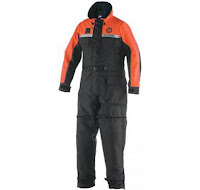Whether you’re out to enjoy the wilderness or surviving a raging storm, it is important to consider that you’re wearing the right clothes. This is not the time to don your favorite heels or your basketball shoes. After all, surviving a disaster could be a matter of life and death, not a game or a movie scene. While we are often advised to pack up a bag in case of emergencies, clothing is often an overlooked aspect. Survival clothing is just as important as any survival kit and it is important to know what the right clothes are in these situations.
Clothing for survival means being dressed to survive. Your clothes should be sturdy, versatile and comfortable. During a disaster or calamity, you’ll be out of your comfort zone and you won’t have your usual amenities. You might have to hunt for food, patrol the neighborhood or help build shelters. It means you’re going to have to get dirty and your clothes should able to handle all these challenges.
Survival clothing can be bought at survival and specialty stores. These clothes are often made of strong materials to help you endure the challenges a calamity may bring. One of the most basic items for survival clothing are pants which are heavy duty. It is best to wear pants which are made of strong fabrics and has a lot of pockets where you can put essential survival items such as a compass, a swissknife and some food bars.
You should also have heavy duty footwears. Boots are often recommended for these situations. Surviving the wilderness or a disaster will require you to be on your feet often so you need comfortable boots. You can also keep a pair of walking shoes if you’re just around the neighborhood or wear a pair of sturdy sandals if you need to cross a river. Make sure these foot wears are slightly larger than your normal size to prevent pain and blisters.
You should also wear socks to keep your feet warm. Furthermore, your survival kit should contain a few pairs of socks in case the one you’re wearing got wet.
Layering your top will also be helpful. You will never know when the temperature suddenly changes and your body need to adapt to the extreme fluctuations. Layering your clothes allows you to easily remove one clothing at a time it gets too hot, or wear another clothing over another if it gets too cold.
Other survival clothing essentials include some changes of underwear, hats and gloves. Furthermore, if you’re about to choose your survival clothing, opt for camouflage or neutral colors. Do away from bright-colored clothes so you can easily blend in with the natural setting.
While we never know when a disaster is going to hit us, it would be useful to have a few pieces of survival clothing for ourselves. You can wish you’d never have to use them, but when the unexpected happens, you’ll realize you’ve made one of the best investments. They may not be fashionable or trendy, at least you know you’re dressed to survive.

